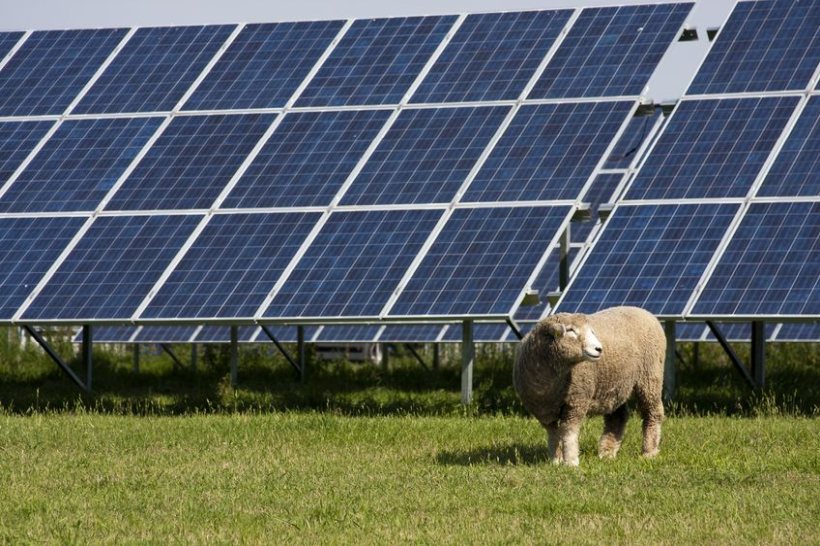
Farming businesses have been issued seven steps to help the agricultural sector reach net-zero emissions by 2040.
Lee Reeves, Head of Agriculture for Lloyds Bank, explains what farmers could consider to help them achieve the NFU’s ambitious target.
Climate change is one of the biggest challenges facing the UK today, with the sustainability agenda playing an increasingly key role in business strategies.
But with agricultural land making up 70 percent of UK’s land area, the farming sector has a particularly crucial role to play in helping to meet targets.
Not only has the government set an ambition to be net0zero by 2050, the NFU has laid down an even more ambitious goal to the sector.
And while many farmers are already actively carrying out adjustments in land use, soil restoration and woodland creation - all great ways of removing carbon from the
atmosphere - the scale of the challenge ahead for agricultural businesses should not be underestimated.
So, what can farmers be doing to help them move towards a greener future?
Measure your carbon footprint
Every farm is facing a different journey to achieve net zero, but whatever your position, it’s essential to have an understanding of your carbon footprint so you can create a feasible action plan for lowering it.
Carbon calculators like Farm Carbon Calculator, Agrecalc or Cool Farm Tool can identify sources of emissions, benchmark emissions against similar businesses and create a baseline for monitoring progress towards low carbon practices.
They can vary in their results, so consider sticking to one.
Plant trees and hedgerows
Reforestation is a powerful way to fight climate change, with trees and hedgerows acting as ‘carbon sinks’ that naturally absorb carbon emissions from the air. But farmers may be missing out on these benefits.
The Woodland Trust can help farmers plant trees and hedgerows at heavily subsidised rates, and increasing trees can also protect valuable topsoil from being eroded.
They also offer protection from drought and floods and helping to boost biodiversity.
Improve productivity and efficiency
Sustainability is at the heart of many new farming practices, so taking steps to improve productivity can also reduce emissions levels.
Precision farming, using controlled-release fertilisers and increasing use of organic manures, can contribute to a reduction in nitrous oxide emissions, while gene editing and breeding, as well as improving livestock health, can lower methane emissions.
Invest in low-carbon agri-technology
The rapidly growing agri-tech market can play a key role in helping farms become more sustainable.
Sustainable intensification by investing in solutions like nitrogen-fixing bacteria, vertical farming and drones, aims to improve productivity with reduced inputs and lower environmental impact.
Boost renewable energy generation
Many farmers have already taken advantage of making their farm more sustainable through renewable energy, and for good reason.
Whether through wind or solar power, installing biomass boilers, or circular waste streams such as Anaerobic Digestion, the benefits can be substantial.
Alongside generating clean energy, Anaerobic Digestion plants can offer opportunities for generating extra income and improving waste management.
Improve soil health
The UK’s soil currently contains the equivalent of 80 years of carbon emissions. However, depleting fertile topsoil levels mean improved farming practices are needed to help rebuild the soil’s carbon stores.
This process is already underway, with 78% of farmers we surveyed saying they had either already started improving soil to become more sustainable or planned to.
Soil health can be improved by using cover crops within crop rotations to help maintain organic matter, management and timing of cultivations and grazing pressure to reduce soil compaction.
And planting more trees in ‘shelterbelts’ along field boundaries will help prevent soil erosion, as well as introducing minimum till cultivation and regenerative grazing practices.
Restore peatlands
Peatlands are a key part of the UK landscape, covering 12% of the nation’s land area, and historically, they’ve acted as a carbon sink.
However, as a result of modification, drainage and damage over the years, they are now a source of carbon emissions.
Restoring peatlands is therefore key. Adapting grazing routines and considering grip blocking, drainage and re-wetting peat soils to restore natural functioning of peatland can all help prevent erosion and loss of carbon emissions from peat soils.
